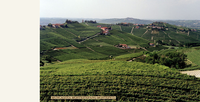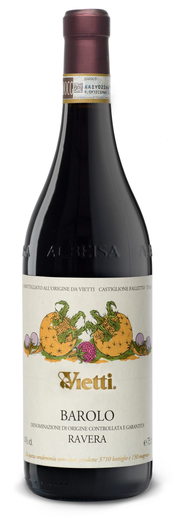Best Gadget: The Aermate (Full Bottle Version)
This is an odd place to start for me, as I believe that almost all wine gadgets are almost entirely ridiculous. You may not share my view, and I don’t want to rain on anybody’s parade during the holiday season, but to my mind, a $10 corkscrew works every bit as well as one costing $300, and things like wine-themed neckties and vine stump coffee tables aren’t even worthy of derision. My advice to newly enthralled wine lovers is to buy a few decent glasses and spend the rest of your discretionary funds on…wait for it…wine!
With that noted, however, I’ve got one gadget that I use every day when I’m not on the road, which is by far the most effective wine aerator I’ve ever tried, which is the full bottle version of The Aermate. It certainly merits mention in this gift-giving season. The thing is basically a stainless steel wand with a  bulb at the top (essentially the same as what you’d find on a turkey baster) and an inch-long cylinder at the bottom with a gazillion little pores. After uncorking a bottle and pouring a healthy glass out of it, one then inserts the want and pumps air into it from the bottom, which sends countless little bubbles into the wine, which foams very noticeably. (This is why you need to pour out a glass first…otherwise, you’ll overflow liquid from the bottle all over your counter.) The fancy winemaking name for this process and effect is, “micro-oxygenation,” and it really does work to get young red wines to open and become much more expressive very quickly.
bulb at the top (essentially the same as what you’d find on a turkey baster) and an inch-long cylinder at the bottom with a gazillion little pores. After uncorking a bottle and pouring a healthy glass out of it, one then inserts the want and pumps air into it from the bottom, which sends countless little bubbles into the wine, which foams very noticeably. (This is why you need to pour out a glass first…otherwise, you’ll overflow liquid from the bottle all over your counter.) The fancy winemaking name for this process and effect is, “micro-oxygenation,” and it really does work to get young red wines to open and become much more expressive very quickly.
The effectiveness of this $30 product (current best price is on aermate.com) is almost completely limited to young red wines, or older reds that wouldn’t likely throw a lot of sediment (which you wouldn’t want to agitate by using the Aermate…go with a decanter instead). In case you are suspicious about my enthusiasm, let me note that the manufacturer’s claim that the device is also effective for spirits (which are listed at length on the box in which the Aermate is sold) is silly, and that its usefulness for white wines is quite minimal.
However, for young reds, this thing is terrific. After the foam in the bottle subsides and settles, I use a cheapo stainless funnel (available at many hardware or home furnishing stores) to pour the glass back into the bottle, and voila…no decanter to wash, no confusion about which wine is in which decanter…just a very effectively aerated young red wine (or five or twelve, as is often the case when I’m reviewing) in the bottle in which it was sold. The only cleanup requires is a quick rinse of the perforated cylinder under running water (while pumping) to assure that the pores don’t get clogged with dried wine. There’s also a “portable” version, but hauling one of these around is too geeky even for me, and that item is too short to be fully effective unless you’re aerating glass by glass, which seems silly. Buy two for yourself, and one for each of your wine loving friends.
Exemplary Importer: Vineyard Brands
My love affair with wine extends from my own neighborhood—Maryland and Virginia outside of DC—to the most remote outposts in South Africa or Western Australia. I can manage to get wines from domestic producers without much difficulty, but like all American wine lovers, I greatly benefit from the hard work of importers. The United States is by far the best country in the world to be a wine consumer in terms of the variety of products to which we have access. However, it is not the easiest place to be an importer, with 50+ legal jurisdictions imposing 50+ different sets of regulatory migraines. Then there are the challenges of sourcing excellent wines from abroad, dealing with swings in currency exchange rates, the logistics of shipping, and now…bloody tariffs! After all of that, there’s the constant need to prod distributors and educate consumers in order to keep exotic wines commercially viable.
The importer that most impressed me during 2019 was Vineyard Brands, headquartered in Birmingham, Alabama, with a sales and marketing office in New York. I’ve had friends and supporters in the company since I started writing for The Washington Post in 1994, so this is not a new relationship. What is so impressive about the company today is that it continues to add excellent new producers (Domaine Stéphane Ogier from the Northern Rhône, Château Climens from Barsac in Bordeaux, J. de Villebois from the Loire and Cossart Gordon from Madeira…all in 2019!) while retaining superb ones from long ago, such as Château de Beaucastel from Châteauneuf du Pape, Château Petrus from Bordeaux, Vincent Dauvissat from Chablis and Champagne Salon.
Those last four houses make extremely sought-after, high-priced wines, but Vineyard Brands also excels at lower price points, and is (for example) one of the USA’s leading sources for high-value, affordable wines from South Africa. Similarly, “VB” works with large producers such as Marqués de Cáceres from Rioja, but also with many small ones, including an amazing array of superb little Domaines from Burgundy.
Emerging Nation: Moldova
That’s right, Moldova, the now independent republic (and former Soviet Republic) located east of Romania in a landlocked spot just below the Ukraine, immediately west of the Black Sea. I had tasted a few Moldovan wines before this year (mostly from Château Vartely), but was only able to immerse myself in August. The trip was very brief – only three full days on the ground – but I was mightily impressed by the country’s potential as well as some of its current releases.
What Moldova brings to the table that’s most interesting are some top-notch indigenous varieties such as Rarǎ Neagrǎ, Viorica, Feteascǎ Neagrǎ, Feteascǎ Albǎ and Fetascǎ Regalǎ. Don’t even try Googling those vine variety names…your computer will possibly explode. Thankfully, some “international varieties” are also grown in Moldova, and some producers are particularly  skillful at making blended wines that can carry proprietary names to help establish a toehold in export markets. Prices are extremely reasonable, which will also help.
skillful at making blended wines that can carry proprietary names to help establish a toehold in export markets. Prices are extremely reasonable, which will also help.
I’ll write up my findings from the August trip here on WRO before long, but for now, keep an eye out for a wine from Moldova, and buy one if you see it. This is a relatively poor, brave little country that could use your support, and what you’ll get out of the bottle will almost certainly be worth more than you paid for it.
Admirable Producer: Boekenhoutskloof
What could be better than this? A stunningly beautiful winery that makes relatively small quantities (8,333 cases) of fabulous, immaculately crafted Semillon and Syrah as well as Cabernet Sauvignon from two separate appellations, but also amazingly high quality, everyday renditions of Sauvignon Blanc, Merlot, Cabernet Sauvignon and Syrah (under the “Porcupine Ridge” brand), plus phenomenally interesting blends (white, red  and rosé under “The Wolftrap” brand)? I’m already out of breath, and I haven’t yet gotten to “The Chocolate Block,” a mid-priced blend that has always been delicious but seems to get better every year.
and rosé under “The Wolftrap” brand)? I’m already out of breath, and I haven’t yet gotten to “The Chocolate Block,” a mid-priced blend that has always been delicious but seems to get better every year.
Certainly among the handful of South Africa’s flagship producers, Boekenhoutskloof is on an incredible tear at the moment, and this might be the best place to start for those who aren’t yet fans of South African wines. This is in part because you can start at any level in the range of wines and get the idea.
Collectors who lean toward France or Napa can start with the Boekenhoutskloof offerings and taste wines equal to – or better than – what they’ve been paying many times more to obtain. Tasting at the estate in Franschhoek in September, I scored the both the Syrah and Semillon from 2017 at 96 points, and a 2007 Semillon from 2007 seemed still below its potential peak. The two Cabernets from the same vintage were in the same league, with the Stellenbosch checking in at 95 and the Franschhoek at 96 but making a case for at least one more point as it unwound in the glass.
That’s very impressive, obviously, but all things considered, the inexpensive wines for everyday drinking should really turn the heads of novices. The Porcupine Ridge Syrah from 2018 ($11) was so good that we poured it at my daughter’s wedding in October (and that was after it won one of 55 slots in what may be the USA’s most competitive restaurant wine selection program for the DC-based Clyde’s Restaurant Group…tasted amongst 3,000+ other wines). It won its slot in a blind tasting with food conducted by 40 employees of the Group, and though I did all of the preliminary round tastings to determine the finalists, I wasn’t among the tasters in that round. If the Syrah hadn’t been so phenomenal, we might very well have taken the Sauvignon Blanc 2018 too, and the 2017 Merlot was also very near the top of its category. Brand duplication wasn’t an issue for The Wolftrap line, and hence the 2017 white blend of Viognier, Chenin Blanc and Grenache Blanc also won a slot.
If you do the math, you’ll see that every wine entered in that selection process confronted a failure likelihood of 98.2%, and yet Boekenhoutskloof’s lineup had two winners in a single year. When a company makes 7 million bottles of wine per year and everything is stellar in its price category, all one can say is: Damn, that’s bloody impressive.
But that’s not all! A new venture in the cool climate area of Hermanus is already making wicked good Chardonnay and Pinot from purchased fruit, and when the estate-grown vines become mature, one can only imagine how good the wines under the “Cap Maritime” wines will be. When somebody tastes 9,000+ wines in a year, it shouldn’t be easy to pick a best producer. But in 2019, it could hardly have been easier for me.
Elegant Vintage: 2016 Barbaresco
Some remarkable vintages for great wine categories across the USA and around the world hit retail shelves during 2019, but my personal favorite would be the 2016s from Barbaresco, which are wonderfully pure, balanced, stylish, natural-seeming wines with an effortless deliciousness built from a rare combination of depth and elegance.
There’s no need to get too geeky about the “why” factors explaining the excellence of the 2016s from Barbaresco. The growing season was unusually cool, moderate and long in the context of a local climate that has been notably hotter for the past two decades. Harvesting was performed later than usual in  perfect conditions, with virtually no “raisining” from heat but still full ripeness, as demonstrated by low levels of sharp malic acid, registering below 1 gram per liter.
perfect conditions, with virtually no “raisining” from heat but still full ripeness, as demonstrated by low levels of sharp malic acid, registering below 1 gram per liter.
The long “hang” time for grape clusters translated into very expressive aromas and complex flavors, with moderate alcohol levels for producers who didn’t get greedy and pick too late. Such greediness was not much in evidence in the many wines I tasted, making for one of the most stylish sets of Barbaresco wines in recent memory–perhaps the single most stylish, based on how the wines look today.
As Nebbiolo lovers know well, only time will reveal the ultimate greatness of this vintage. However, time is currently the enemy of those who wish to be able to taste these wines when they approach maturity in another five years or so, and consequently you should consider buying in the near term. I recommended 10 exceptional wines in a column on WRO in early March, and will list those wines here. All were tasted blind in the region in late January, and of the ones I’ve been able to taste in the USA since then, all of my scores would now be higher. So, though I’ll review more 2016 Barbaresco wines in 2020, the time to start buying is NOW:
Battaglio “Serragrilli” 2016 ($50, 95); La Biòca “Ronchi” 2016 ($40, 95); Albino Rocca “Cottà” 2016 ($50, 95); Castello di Neive “Santo Stefano Albesani” 2016 ($65, 94); Poderi Colla “Roncaglie” 2016 ($55, 94); Giuseppe Cortese “Rabajà” 2016 ($55, 94); Giuseppe Nada “Casot” 2016 ($48, 94); Paitin di Pasquero-Elia “Sori Paitin Serraboella” 2016 ($50, 94); Pasquale Pelissero “Cascina Crosa” 2016 ($40, 94); Cascina Luisin “Rabajà” 2016 ($50, 93).
Gorgeous Wine: Vietti Ravera 2015
Of the wonderful wines I was fortunate to taste during 2019, the one that still holds the strongest grip on me was one I tasted all the way back in January in the gorgeous town of Alba, just below the Alps in northwestern Italy. I hasten to emphasize that the beauty of the place had nothing to do with the evaluation experience, as I tasted this "blind" among many, many other newly-released, Nebbiolo-based wines over the course of four days. Working on 100+ of these  per day is a little less fun and a lot more like "work" than you might guess…until a truly great wine in the long sequence just kicks down the door and announces itself with exhilarating clarity, which is how Vietti’s 2015 Ravera presented itself to me.
per day is a little less fun and a lot more like "work" than you might guess…until a truly great wine in the long sequence just kicks down the door and announces itself with exhilarating clarity, which is how Vietti’s 2015 Ravera presented itself to me.
If you’ve read some of my Barolo reviews from the past 10 years of blind tastings in Alba, you’ll know that I’m not overawed by the region’s big names, nor afraid at all to give very high scores to up-and-coming producers regardless of how obscure they may yet be. But with that noted, it is also true that sometimes famous houses prove entirely deserving of their fame, as in the case of Vietti’s phenomenally great Barolo from the Cru of Ravera in the commune of Novello.
In terms of texture, it is simply the best 2015 Barolo I’ve tasted, with an uncanny combination of silkiness and proportionality that effectively disguises the fact that it is actually a big, concentrated, powerful wine. Wine descriptors are all just analogies, so bear with me while I note that it is essentially impossible for a human being to come off as “charming” and “formidable” simultaneously, whereas this wine proves that the combination is no impossibility in the rare realm of truly great Barolo.
Ultra-complex and yet amazingly pure and natural-seeming, this will be expensive, but well worth taking a hammer to your piggy bank. $195 is a lot to ask from a piggy bank, but not too much to ask for this amazing wine, which I may have under-scored at 99 Points. Do what you must: Raid the kids’ College Fund, sell your watch, hock your wedding ring…do whatever is necessary to get ahold of one of these. Then wait about 8 – 10 years, and get ready to hear the Heavenly Choir chime in when this hits your palate.
Connect on Twitter: @Michael_Franz
